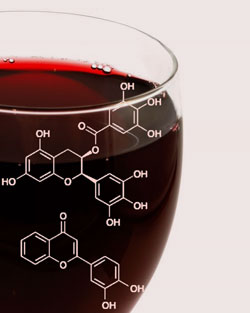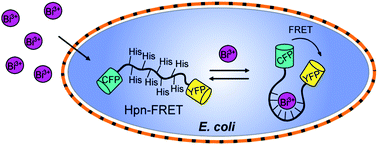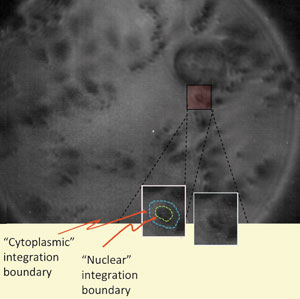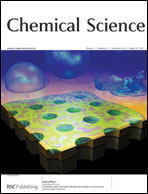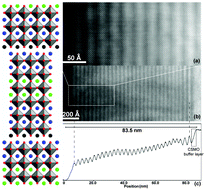A sensor that can discriminate between different tannins and be used to fingerprint a wide variety of red wines to confirm their authenticity has been developed by US scientists.
Eric Anslyn and colleagues at the University of Texas at Austin and University of California Davis have developed a sensor made with colour-changing indicators. They used the sensor to test wine samples from different vintners and managed to distinguish between specific flavonoids – chemicals found in fruit and vegetables, tea and red wine – in particular looking at tannins, which are responsible for colour, aging ability and texture.
When wine is added to the sensor, the indicators are displaced, which results in a colour change that can be monitored and recorded. The team found that patterns emerged for different wine varietals. They tested Pinot Noir, Zinfandel, Beaujolais, Cabernet Sauvignon, Shiraz and Merlot and assigned signatures to each wine type. The team could also classify wines from the same varietal. They tested different brands of Shiraz (and Zinfandel in a separate study) and they were able to link the tannins to the genome of the specific grape.
‘The ability to fingerprint mixtures of metabolic origin, without knowing their exact compositions, has huge potential for applications in medical diagnostics, environmental science and the food industry,’ says Anslyn.
Kim Janda, a detection expert at the Scripps Research Institute in the US, has visions of the sensor being used for ‘biodefense purposes where rapid and accurate identification is at a premium.’ Janda adds: ‘if Anslyn improved the method further he could put sommeliers out of business!’
‘Product authenticity is an important issue with food and beverages, particularly with high value products such as wine,’ says Bob Dambergs, a senior research scientist at the Australian Wine Research Institute, Glen Osmond. ‘Flavonoid compounds define red wines and this study makes clever use of specific interactions of flavonoids with peptides to produce a sensor array with high discriminatory power. Most wine producing countries have strict label-integrity regulations to protect consumers – the availability of rapid analysis methods utilising chemical sensors will facilitate compliance monitoring.’
Fancy reading more? Then why not download and read the Chemical Science Edge Article for yourself, details can be found below:-
Discrimination of flavonoids and red wine varietals by arrays of differential peptidic sensors
Alona P. Umali, Sarah E. LeBoeuf, Robert W. Newberry, Siwon Kim, Lee Tran, Whitney A. Rome, Tian Tian, David Taing, Jane Hong, Melissa Kwan, Hildegarde Heymann and Eric V. Anslyn, Chem. Sci., 2011
DOI: 10.1039/c0sc00487a


